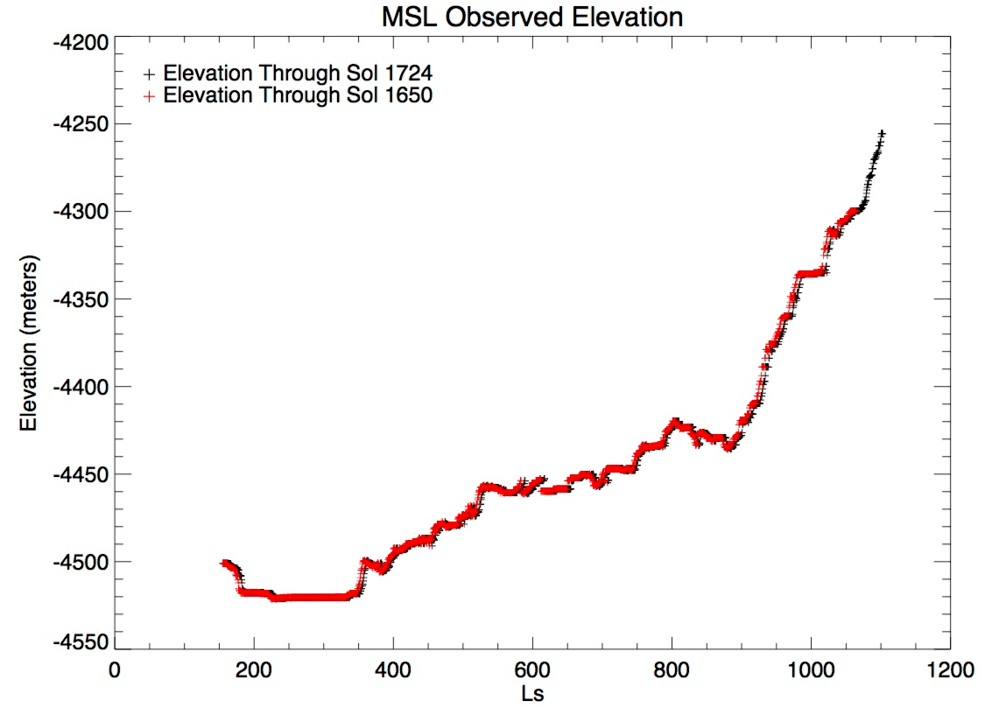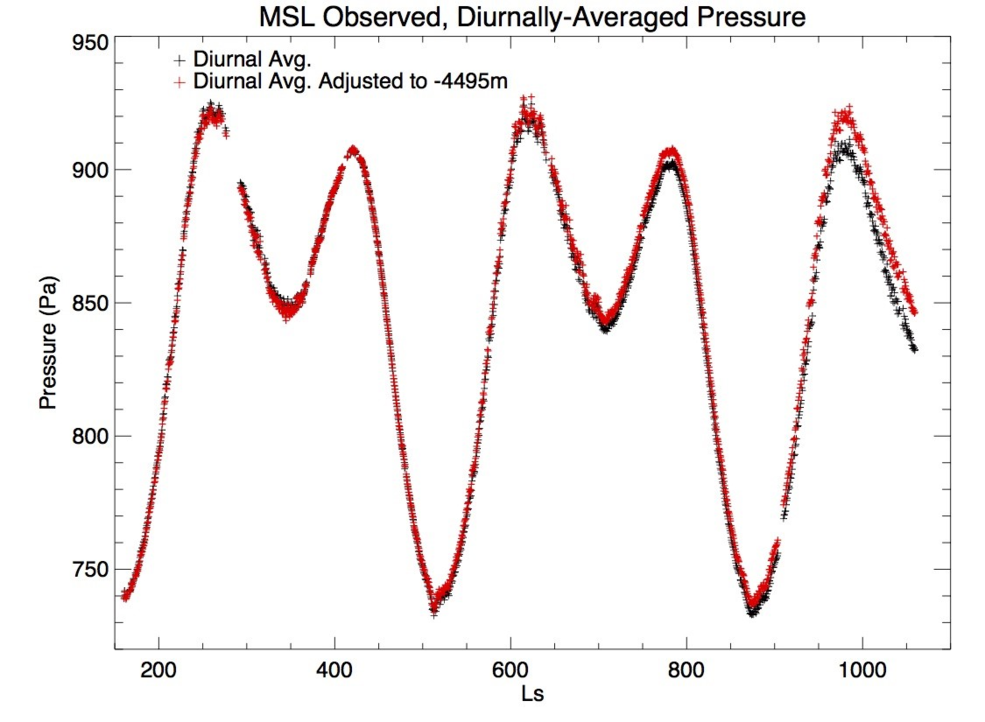Detecting Secular Climate Change on Mars
The MCMC is assessing the stability of the South Polar Residual Ice Cap (SPRC) on Mars using a combination of in-situ meteorological data from the Mars Science Lab (MSL) Curiosity Rover (Figures 1 and 2) and Mars GCM model simulations. The motivation for this research originates in observations of cap erosion from satellite imagery in 2001 and again in 2010 that suggest the cap may be sublimating CO2 faster than it is replenishing it. We know the persistence of the surface reservoir of CO2 is contingent on the equilibrium exchange of CO2 between the atmosphere and the surface. If this process is favoring CO2 sublimation, it would most likely result in an increase in atmospheric mass.
The project began with a search for a signal in the in-situ surface pressure data that could indicate atmospheric mass change (Haberle & Kahre, 2010). Having identified that signal, the current goal is to estimate the net change in atmospheric mass, if any, due to CO2 sublimation from the cap.
This project is improved by the addition of a new Mars GCM based on the NOAA/GFDL cubed sphere dynamical core. At 1/4-degree resolution, the model resolves major features of Gale Crater where Curiosity resides. The new GCM provides a means of mitigating the effects of physical and dynamical processes in the atmosphere so we can isolate the effects of CO2 content for our study. Preliminary results estimate an atmospheric loss rate of ~5 Pascals per Mars Decade, which is comparable to the year-2 MSL sensor accuracy (~4 Pa). Coupled with the uncertain accuracy of the VL2 pressure sensor, we see no compelling evidence for secular climate change, a result consistent with recent refinements in actual cap loss rates (see Thomas et al. 2016, Byrne et al. 2015, Becerra et al. 2015). However, recent developments in the new GCM might improve model physics and could alter these results. We are currently working with these changes to provide a more accurate answer to the SCC problem.






























